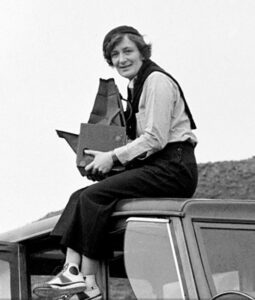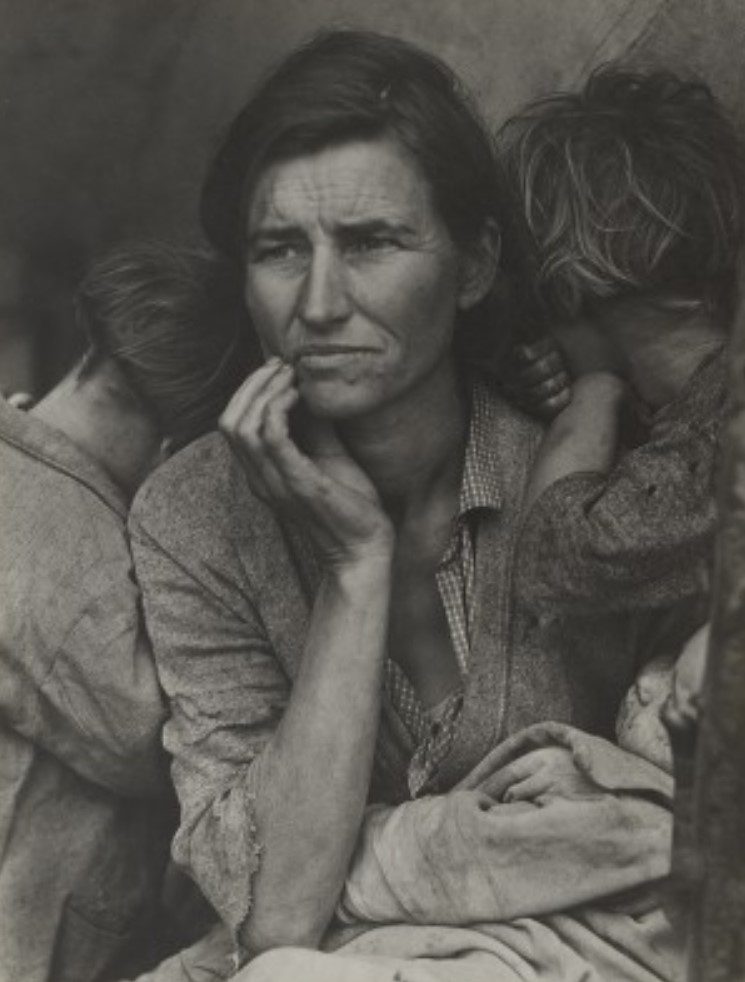DOROTHEA LANGE

Dorothea Lange is best known for her work for the Farm Security Administration (FSA) during the Great Depression, Migrant Mother being arguably her most famous photograph. She continued to make wonderful documentary photographs after the 1930s until she died in 1965.
Born in New Jersey in 1895, she settled in San Francisco in the early 1920s where she established a successful portrait studio. In 1935, she married Paul Taylor and, for the next five years, they worked together for the FSA – Lange as photographer, Taylor as writer. In 1939, they published An American Exodus: A Record of Human Erosion. In the 1940s, she photographed interned Japanese-Americans in California. IN 1965, she worked with John Szarkowski to prepare her retrospective at the Museum of Modern Art (MoMA), the first-ever retrospective of a female photographer. She died three months before its opening.
MoMA’s 2020 retrospective, Dorothea Lange: Words and Pictures, curated by Sarah Meister, happened while the museum was closed due to coronavirus. The “Virtual View” about Dorothea Lange can be found here. It includes an intelligent, engaging, hour-long discussion between Meister and Sally Mann about Lange’s photography.
Mann is one of twelve artists who contributes new words for this exhibition. She writes about Lange’s photograph The Defendant, Alameda County Courthouse, CA, 1955-57. You can listen to Mann read her words here, just fast forward seven minutes into the video.

Meister and Mann discuss how text and imagery might be combined, and also the use of staged photography in documentary work. The following is a brief summary of their conversation.
Photographs can respond to writing, and writing can respond to photography. An example of the former might be the creation of a movie from a book; an example of the latter is Mann’s commentary on The Defendant. Pictures can overwhelm actual memories of a scene and ruin the ability to remember things outside the image. If, however, you force your mind to remember, you add multiple layers – what Mann calls “a compound, amalgam of imagery.”
Lange said, “All photographs can be fortified with words.” Further, in the 1960s, she wrote to John Szarkowski about her upcoming retrospective: “Am working on the captions. This is not a simple clerical matter, but a process, for they should carry not only factual information, but also added clues to attitudes, relationships, and meanings. They are connective tissue, and in explaining the function of the captions, as I am doing now, I believe we are extending our medium.”
Lange’s book, An American Exodus, is an example of the juxtaposition of photographs and text; in this case, it is often the subject’s own words.

Note the graphic design of the endpapers of the book – the voices of the people captured in the book.

One of Lange’s favorite quotes, by Francis Bacon in 1620 (and pinned to her darkroom door) reads, “The contemplation of things as they are without substitution or imposture, without error or confusion, is in itself a nobler thing than a whole harvest of invention.” How do Lange’s posed photographs, including Migrant Mother, settle with this quote?

Meister said that photographers work to find the best angle for the most persuasive way to tell a story and that we should not be too dogmatic: clarity and authenticity are not necessarily at odds with posing. Mann agreed: her Family Pictures are what she calls a hybrid of truth and fiction; once you set up a camera, you change the thing you observe. You can’t take a picture without imposing yourself on it.
Lange’s photographs were successful on several levels: aesthetically pleasing compositions; an understanding of light; a mastery of portrait and gesture; and skill combined with wisdom and humanity.
“How do you tell others about what you think is worth telling?” she asked.
Indeed.

